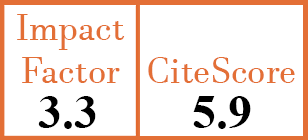Basic and animal research on pain in rheumatic diseases
An overview of pathways encoding nociception
S.A. Woller1, K.A. Eddinger2, M. Corr3, T.L. Yaksh4
- Department of Anesthesiology, University of California San Diego, La Jolla, CA, USA.
- Department of Anesthesiology, University of California San Diego, La Jolla, CA, USA.
- Division of Rheumatology, Allergy, and Immunology, University of California San Diego, La Jolla, CA, USA.
- Department of Anesthesiology, University of California San Diego, La Jolla, CA, USA. tyaksh@ucsd.edu
CER10773
2017 Vol.35, N°5 ,Suppl.107
PI 0040, PF 0046
Basic and animal research on pain in rheumatic diseases
Free to view
(click on article PDF icon to read the article)
PMID: 28967373 [PubMed]
Received: 01/09/2017
Accepted : 04/09/2017
In Press: 29/09/2017
Published: 29/09/2017
Abstract
The nervous system detects and interprets a variety of chemical, mechanical, and thermal stimuli. In the face of tissue injury, local inflammatory products perpetuate ongoing activity and sensitisation of the peripheral nerve termini. This ongoing activity evokes a state of robust spinal facilitation mediated by a number of local circuits, the net effect yielding an enhanced message of nociception to higher centres. This messaging typically wanes with the resolution of inflammation or wound healing. However, there are situations in which peripheral and central components of the pain transmission pathway extend and enhance the pain state, leading to a persistent hypersensitivity, e.g., an acute to chronic pain transition. Current work points to the contribution of innate and adaptive immunity in creating these enduring conditions. We briefly describe the underlying biological components of both physiological pain processing and pathological pain processing, as well as the acute to chronic pain transition and the role of innate and adaptive immunity in this transition.


